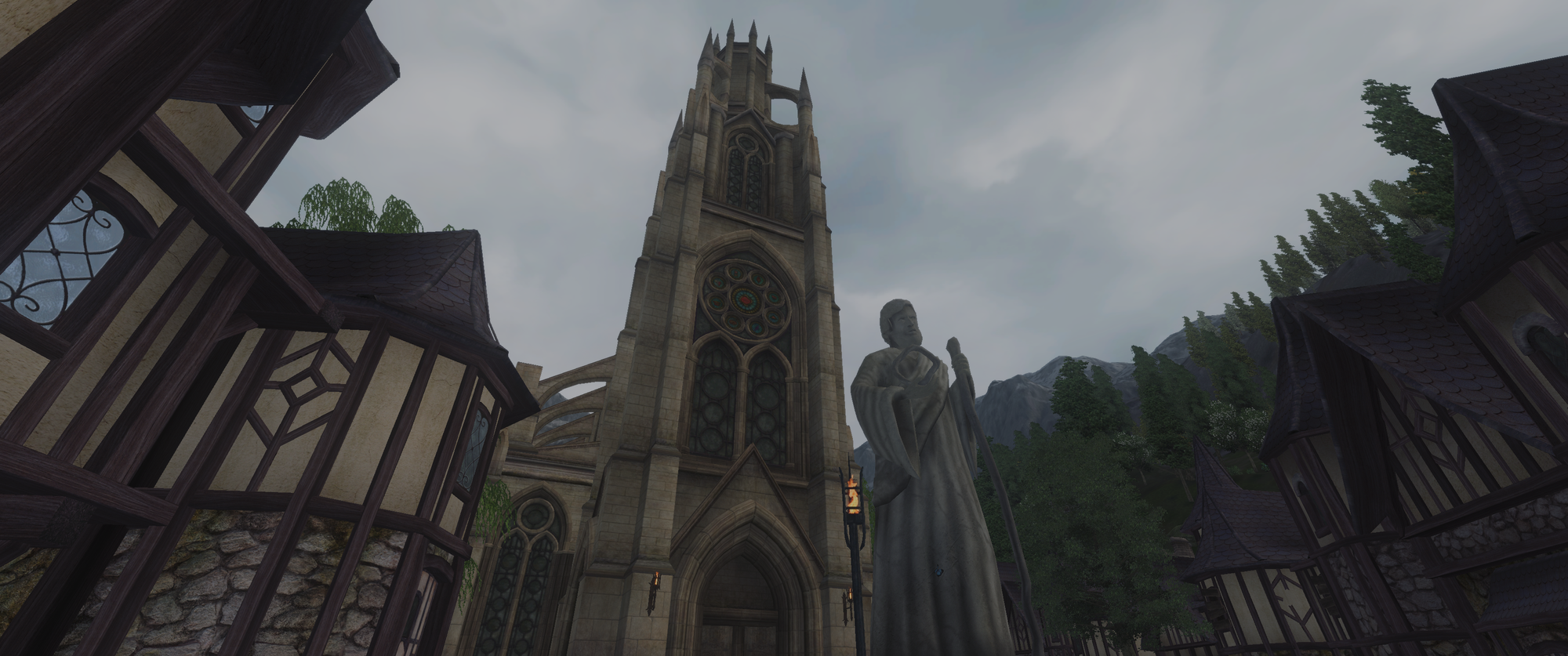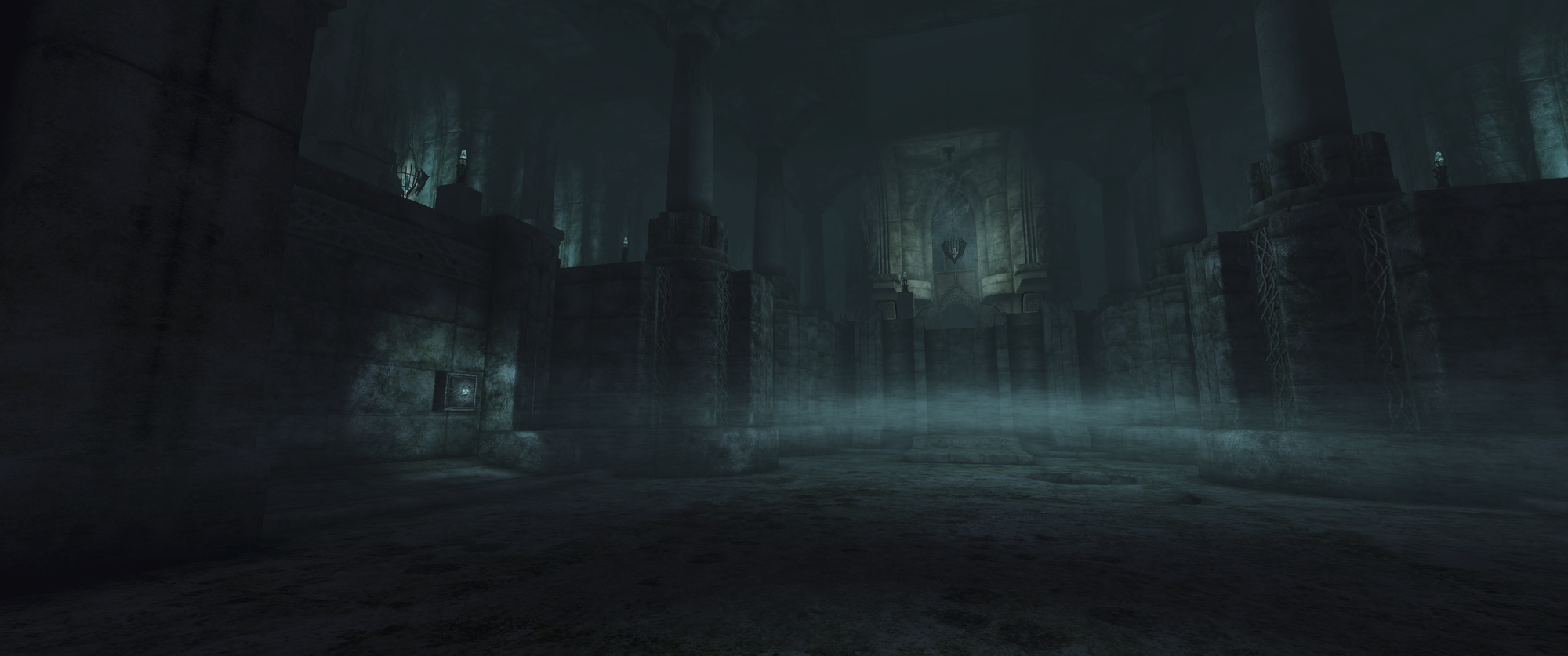The Unexpected Joy of Revisiting Oblivion
A lively adventure through ancient ruins and sleepy towns brings back nostalgic memories

In the cool, uncaring dark of a Cheydinhal midnight, the normally lively town feels like a place out of time. Windows cast amber light onto the streets, patrolled by guards under the command of corrupt guard captain Ulrich Leland. Their foreboding faces are ready to cast judging eyes on any wanderer in the streets, eager to exact another fine and line their pockets with other men’s gold. Seeking refuge for the night in a town like this is almost begging for trouble.
But that’s the life I signed up for.
Revisiting The Elder Scrolls IV: Oblivion is like running into an old lover in a bar. You sit and sip the night away, talking about what was and maybe what could have been. There’s some kind of promise hanging in the air between you, something that speaks of a different life. If you weren’t committed to what you’ve found since the time you spent together, maybe you’d even take a chance and go home with The Elder Scrolls IV: Oblivion.
But 2006 was so long ago, and now things are quite different for both of you. You’ve seen Fallout reimagined and refined. You’ve explored the frozen north of Skyrim. And Oblivion? Still, the same old Oblivion you knew and loved all those years ago.

I rolled a simple character this time. I wanted a build that would allow me to engage with my favorite parts of The Elder Scrolls, namely the emergent adventures away from central questlines that allow you to find a place in the larger world of Tamriel in which to inhabit. I’m a thief. A sneaky little guy who enjoys lifting treasures out of people’s pockets and plundering tombs, specifically Ayleid tombs.
Dotted across the game world are ruins of a civilization of elves from millennia ago who once ruled over the heartlands of Tamriel. Their brutal reign involved outright enslavement of the races of men, one of many fascinating chapters of Elder Scrolls lore that makes the fictional world feel simultaneously alive and ancient. These ruins are often rigged with booby traps or patrolled by the undead. Skeletons, perhaps the ancestors of my own character, patrol the hallways of outright alien architecture. Their vigil is endless, reanimated bones grinding along worn stones again and again and again until time stops.
Many of these places have remained unexplored by the less daring citizens of Cyrodiil. Perhaps they are afraid to face the horrors of their collective past. They are content to walk about quaint hamlets like Cheydinhal, dealing with more mundane problems like corruption among city officials, pretending that the enslavement their own ancestors participated in as either oppressed or oppressor never happened. It is best to leave the past firmly rooted somewhere unseen and unexplored.
My bones cannot stand the monotonous pace of a life lived endlessly retreading the same pathways, a solemn truth that led me to the profitable world of grave robbing.

Dotted across the game world are ruins of a civilization of elves from millennia ago who once ruled over the heartlands of Tamriel. Their brutal reign involved outright enslavement of the races of men, one of many fascinating chapters of Elder Scrolls lore that makes the fictional world feel simultaneously alive and ancient.
Across a stream from where players first emerge into the world of Oblivion is one of these Ayleid ruins, a place called Vilverin. For many players, it may be the first place off the beaten path they dare to explore. Bandits watch the entrance and mingle with the skeletons guarding the interior. Essentially, in Bethesda’s classic environmental storytelling style, your entrance into Vilverin is an interruption of a currently in-progress tomb raiding.
Deep within the innermost chambers, however, is a peculiar treasure hidden amongst the star-like Welkynd and Varla stones that I have come to recognize as profitable trinkets ripe for selling in the Imperial City. This statue does nothing to decry its nature, and even looks plain compared to some of the other treasures that will gradually fill your pack. Yet it stands out all the same.
Should you choose to sell this bauble, as I did, you will soon be approached by a messenger speaking on behalf of an Imperial City aristocrat. This well-off patron of the artifact-stealing arts is Umbacano, an Altmer fascinated by the very ruins left behind by his Ayleid ancestors so long ago. He is seeking not only the statue you recovered but nine identical ones hidden in other ruins across Cyrodiil. He is less than forthcoming with what his ultimate plans are, something to always be suspicious of in the adventuring trade, but his offer of gold and good faith seems legitimate enough.
This interaction, one I admit I’d never encountered in the game before, has influenced the entirety of the play through that has followed. Though it is difficult to narratively reconcile the fact that I’m ignoring the delivery of a necklace entrusted to me by my own slain emperor, I have left the Amulet of Kings to gather dust deep in the innermost bowels of my adventuring pack. The fact of the matter is I’m eager and ready to find these statues. To gather them for this rich elf and take his gold gladly.
I’m also curious in what way this will ultimately play out. What possible need could Umbacano have for these statues? Why is he so eager to gather the set? I refuse to believe he plans to fill a shelf with them and let that be that. His interests must be more than academic. Tempted as I am to turn to the Unofficial Elder Scrolls Pages (the only resource for true Elder Scrolls information fiends) for quick answers, I’ve decided to sit back and exercise my patience.

Essentially, in Bethesda’s classic environmental storytelling style, your entrance into Vilverin is an interruption of a currently in-progress tomb raiding.
Did I mention how many Ayleid ruins there are? I’ve already been spelunking through five of these decrepit pits and all I’ve gotten for my trouble is an overflowing coin purse. Not a single other statue to be found, despite the nine of them still out in the wild. But I refuse to seek quick answers as to their whereabouts, which has pushed me into this world of really walking in my own character’s shoes.
Ruins are full of loot, which quickly fills up my carrying capacity. It’s already limited as I’m more adept at walking quietly than swinging around massive swords or even lugging them around. This has caused me to be selective as I navigate the ruins, choosing only the more valuable items to take with me back up into the embrace of sunlight. My pack is often filled with the aforementioned Varla and Welkynd stones, which stored magical energy for the Ayleids to power their ancient technologies. Merchants go crazy for this stuff.
Selling items involves engaging more thoroughly with the persuasion system. It’s the mini-game where you choose one of four general courses of action in a conversation and affect the NPC disposition. The higher the disposition, the more they like you. For merchants, who I’m interacting with frequently as I gather all this treasure, that has a side-effect of allowing you to sell higher and buy lower. Basic economics: the other person likes you so they cut you a deal. Something any thief has to be both keenly aware of and ready to exploit.
As I stride out of Jensine’s “Good as New” Merchandise (quotes required), I realize that I’ve crafted a bit of a story for myself already. Here I am, again in this city, with a fistful of Septims. Making way for the gates and my next adventure, there’s no doubt in my mind where I’m going. As high up as I can, looking down upon the valleys of Cyrodiil, in hopes of spotting the crumbling remains of the world that once was.
Much like the character I’ve unwittingly invented for this playthrough of Oblivion—and the lovelorn wanderer meeting an old flame once again—I have found myself eagerly seeing where the evening will take me.
This, my friends, is the magic and joy of a role-playing game. And if there's anything that Oblivion has an abundance of, despite its age, it's magic and joy.
